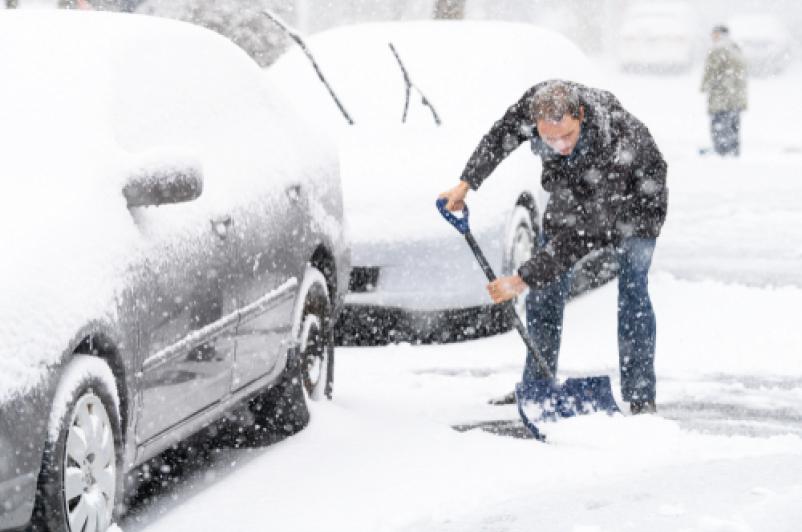
Shoveling snow is hard work and can lead to a number of health risks for many people, from back injuries to heart attacks.
The mix of cold temperatures and physical exertion increases the workload on the heart, which may increase the risk of a heart attack for some. According to the American Heart Association, even walking through heavy, wet snow can place strain on your heart.
The following tips can help keep you safer when you set out to shovel.
- Keep up with the storm
- Push don't lift
- Wear breathable layers
- Wear good boots
- Stay hydrated
More detailed tips:
- Warm up. Warm your muscles before heading out to shovel by doing some light movements, such as bending side to side or walking in place.
- Push rather than lift. Pushing the snow with the shovel instead of lifting can help reduce the strain on your body. When lifting snow, bend your knees and use your legs when possible.
- Choose your shovel wisely. Ergonomically-designed shovels can help reduce the amount of bending you have to do.
- Lighten your load. Consider using a lighter-weight plastic shovel instead of a metal one to help decrease the weight being lifted.
- Hit the pause button. Pace yourself and be sure to take frequent breaks. Consider taking a break after 20 to 30 minutes of shoveling, especially when the snow is wet.
- Consider multiple trips. Consider shoveling periodically throughout the storm to avoid having to move large amounts of snow at once.
- Keep up with snowfall. Try to shovel snow shortly after it falls, when it is lighter and fluffier. The longer snow stays on the ground, the wetter it can become. Wet snow is heavier and harder to move.
- Wear layers. Dress in layers and remove them as you get warm to help maintain a comfortable body temperature.
- Stay hydrated. Drink plenty of water to stay hydrated while shoveling.


